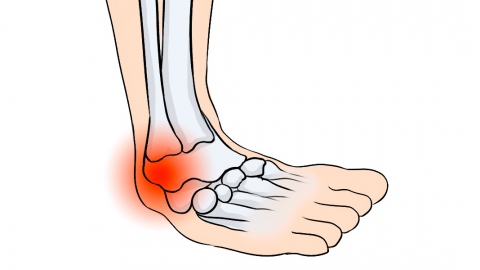What causes swelling and pain in the ankle and leg?
Generally, swelling and pain in the ankle may be caused by trauma or impact, prolonged standing, ankle sprain, gouty arthritis, or deep vein thrombosis in the lower limbs. It is recommended to seek medical attention promptly, identify the underlying cause, and receive symptomatic treatment under a doctor's guidance. Specific causes are analyzed as follows:

1. Trauma or Impact: When the ankle suffers external impact, it can lead to local soft tissue damage and capillary rupture, resulting in swelling and pain. Activity should be stopped immediately. During the acute phase, apply ice packs to reduce swelling; after 48 hours, switch to heat compresses to promote absorption of bruising, and avoid excessive strain on the ankle.
2. Prolonged Standing: Maintaining a standing posture for long periods impedes venous return in the legs, causing blood to pool in the ankle area, leading to swelling and pain. It is advisable to sit down periodically, elevate the legs to enhance blood return, and engage in light movement to activate leg muscles and relieve venous pressure.
3. Ankle Sprain: Excessive twisting of the ankle during exercise or walking can overstretch ligaments, causing ankle swelling, pain, and restricted movement. Patients may use medications such as diclofenac diethylamine gel, ibuprofen sustained-release capsules, or Yunnan Baiyao aerosol as directed by a physician to alleviate pain.
4. Gouty Arthritis: Abnormal uric acid metabolism leads to deposition of uric acid crystals in the ankle joint, triggering inflammation and causing painful swelling, often accompanied by redness and fever. Patients may follow medical advice to take medications such as allopurinol tablets, febuxostat tablets, or colchicine tablets to lower uric acid levels and reduce inflammation.
5. Deep Vein Thrombosis (DVT) in Lower Limbs: Increased blood viscosity and slow venous flow can lead to blood clot formation in the ankle veins, causing swelling and pain, often with elevated skin temperature. In severe cases, inferior vena cava filter placement may be required to prevent clot dislodgement and serious complications.
In daily life, avoid ankle injuries, minimize prolonged standing or sitting, and perform appropriate leg stretching exercises. If ankle swelling or pain occurs, rest promptly and apply corresponding relief measures. Avoid overusing the ankle during recovery to facilitate symptom improvement.




